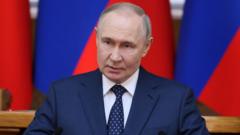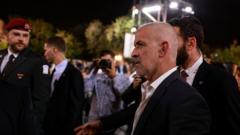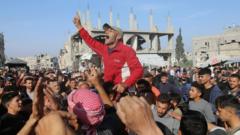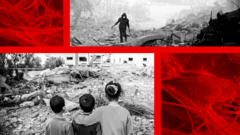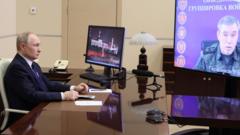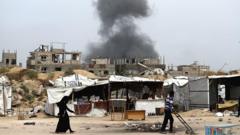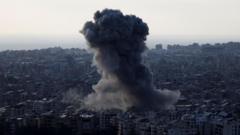The recent release of hostages by Hamas has sparked outrage in Israel, highlighting the emotional complexity of the situation as families grapple with loss and those freed appear traumatized.
**False Hopes and Fragile Peace: Consequences of Hostage Releases in Gaza**

**False Hopes and Fragile Peace: Consequences of Hostage Releases in Gaza**
Amidst a fragile ceasefire, the physical and emotional toll on hostages weighs heavily on Israel and Hamas negotiations.
The televised release of former hostages Eli Sharabi, Ohad Ben Ami, and Or Levy by Hamas fighters has unleashed deep anguish across Israel, overshadowing the moment with images of distraught, gaunt men. Sharabi's expression of joy at returning home was met with heartbreak as viewers recalled the tragic deaths of his family members during Hamas's attack on October 7, 2023. The broadcast aimed to reinforce Hamas's power, although the visible deterioration of the hostages shifted the public mood from celebration to sorrow.
Ruth Senderovich, 21, expressed the conflicting emotions experienced by onlookers: “It’s the greatest joy that I’ve had in a while, and it’s also devastating.” Prime Minister Benjamin Netanyahu acknowledged the distressing scenes, indicating a forthcoming response without detailing its nature. The International Committee of the Red Cross (ICRC) raised concerns regarding the well-being of hostages and called for more dignified, private handover processes.
Following the release of the three Israeli hostages, 183 Palestinian prisoners were also set free, some with troubling health conditions stemming from their detention. Among them was Jamal al-Tawil, a former mayor alleged to have orchestrated deadly attacks. His daughter claimed he was beaten prior to release, highlighting the ongoing narratives of mistreatment within the Israeli prison system.
As the ceasefire hangs in the balance, Israel has dispatched negotiators to Qatar, while Hamas asserts its readiness for peace talks, but also critiques Israel's commitment. The duality of the situation continues to provoke a range of responses, signaling that achieving a lasting peace will be fraught with emotional and logistical challenges. The haunting faces of the released hostages serve as a stark reminder of the urgent need for resolution in a conflict marked by suffering and loss.
Ruth Senderovich, 21, expressed the conflicting emotions experienced by onlookers: “It’s the greatest joy that I’ve had in a while, and it’s also devastating.” Prime Minister Benjamin Netanyahu acknowledged the distressing scenes, indicating a forthcoming response without detailing its nature. The International Committee of the Red Cross (ICRC) raised concerns regarding the well-being of hostages and called for more dignified, private handover processes.
Following the release of the three Israeli hostages, 183 Palestinian prisoners were also set free, some with troubling health conditions stemming from their detention. Among them was Jamal al-Tawil, a former mayor alleged to have orchestrated deadly attacks. His daughter claimed he was beaten prior to release, highlighting the ongoing narratives of mistreatment within the Israeli prison system.
As the ceasefire hangs in the balance, Israel has dispatched negotiators to Qatar, while Hamas asserts its readiness for peace talks, but also critiques Israel's commitment. The duality of the situation continues to provoke a range of responses, signaling that achieving a lasting peace will be fraught with emotional and logistical challenges. The haunting faces of the released hostages serve as a stark reminder of the urgent need for resolution in a conflict marked by suffering and loss.


